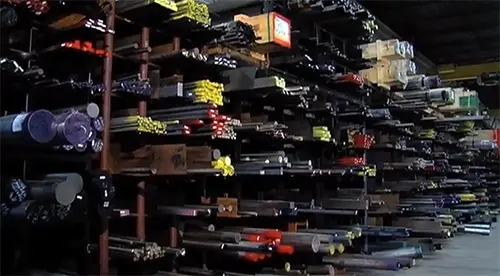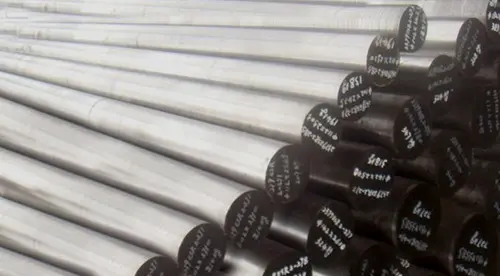ASP 30 Steel Equivalent

ASP 30 is a type of high speed steel also known as ASP 2030. Both are ASP 30 steel equivalents. Explore the physical properties, thermal treatments, and common applications of this dependable high speed steel.
ASP 2030 Steel Physical Properties
Compared to other alloys, ASP 30 steel offers competitive levels of red hardness and ease of grinding. The wear resistance and toughness are balanced and higher than some alternatives. Consider the physical and chemical properties as you shop for steel solutions:
- Modulus of elasticity: 34 x 10⁶ psi
- Density: 0.287 lb/in³
- Carbon: 1.25
- Chromium: 4.2
- Tungsten: 6.4
- Molybdenum: 5
- Vanadium: 3.1
- Cobalt: 8.5
This cobalt high-alloyed powder metallurgy steel offers excellent features for machining or cold work. The PM process also aids in stability during typical heat treatment options. It’s also known as SKH 56, HS 6-5-3-8 and M36. Depending on the thermal process you choose, you can alter the hardness, machinability or other features of this steel.
Thermal Treatments

Work with ASP 2030 steel in various thermal treatments to harness the natural properties of this durable steel. Consider the following temperature ranges and treatment steps for optimal performance in your specific tool manufacturing application:
- Preheating: It’s recommended to preheat this steel between 840 and 930 degrees Fahrenheit, or between 1560 and 1650 degrees Fahrenheit, depending on your process.
- Austenitizing: High-heat austenitizing requires a rapid increase from the preheat level. The best way to achieve this is to heat a second furnace to the recommended level, usually between 1920 and 2160 degrees Fahrenheit, depending on the final hardness required. Avoid oxidation and decarburization during the hardening process.
- Quenching: Quench the steel until it reaches a temperature of about 120 degrees Fahrenheit before tempering it. This can be achieved with a vacuum furnace between 2 and 5 bar, as well as a martempering bath at approximately 1004 degrees Fahrenheit. Try to keep the cooling speed to around 20 degrees Fahrenheit per second for high toughness.
- Tempering: Cold work needs to be tempered at 1040 degrees Fahrenheit. Perform this process at full temperature three times for one hour. Once the process is completed, allow the tool to cool to room temperature.
- Annealing: After the hot working process is complete, but before the tool is re-hardended, heat it to 1600 degrees Fahrenheit at a rate not exceeding 400 degrees Fahrenheit. After holding the temperature for one hour per inch of material thickness, cool it to 1000 degrees Fahrenheit at a speed less than 30 degrees Fahrenheit per hour. Allow the tool to finish cooling to the ambient temperature.
Product Shape Options
Turn to Griggs Steel to receive ASP 2030 steel in a wide range of product sizes, shapes and order amounts. Choose coils, flat bars, hot-rolled sheets or round bars for your specific manufacturing and heat treatment process. Regardless of the shape, this high speed steel is an excellent material for machining, polishing, welding and hot forming.
Common Applications of ASP 30 Steel
Consider your manufacturing application as you compare ASP 2030 steel with other types of steel from Griggs. This particular product is commonly used in the following applications:
- Milling cutters
- Blanking
- Drills, saws and other cutting tools
- Broaches
- Taps and dies
- Cold work
- Hops
After these parts and tools undergo manufacturing and thermal treatment steps, they’re ready for long-lasting performance in a range of applications. Create a long-lasting cutting edge, wear-resistant die or durable broach for your facility or your client order.
